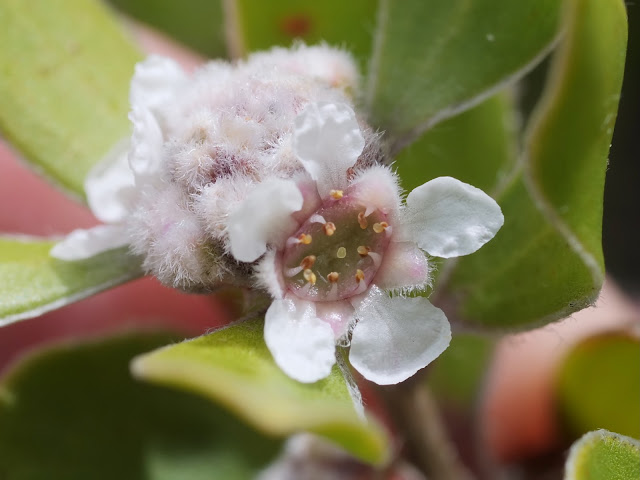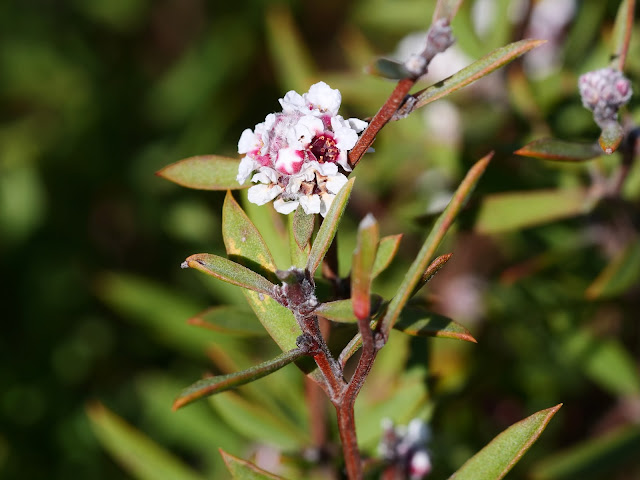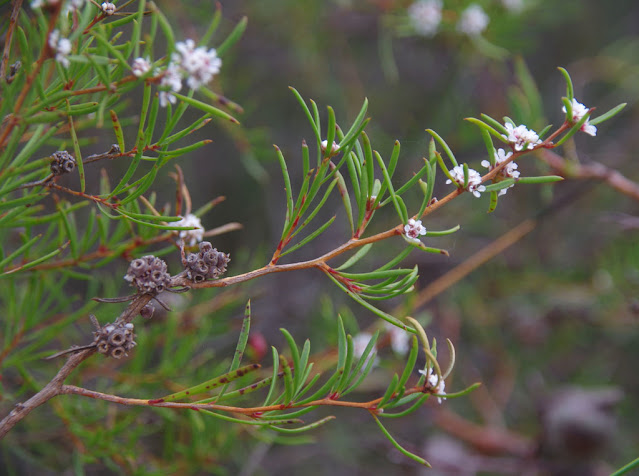Taxandria spathulata
 |
| (c) David McCorquodale, some rights reserved (CC BY) |
Spathulata from the Latin - spoon shaped. Refers to the shape of the leaves.
Occurs from the Stirling Range and Porongurups east to Israelite Bay, extending north to near Lake King. Grows in a variety of habitats, most commonly on sandy soils in heath, shrubland, malleeheath or woodland.
Shrub to 2 m tall. The leaves single not clustered, spathulate; stalk usually 0.5–1.5 mm long, shortly hairy; blade elliptic or almost circular, flat to very slightly concave above and convex below, often somewhat recurved, 2–6 mm long and 1.5–5 mm wide, largely hairless.
Flower clusters terminal or terminating short shoots, hemispherical to globular, 8–10 mm across. Bracts largely hairless, bracteoles densely hairy down keel. Sepals with sparse coarse hairs particularly towards the tip, which may be triangular or rounded. Petals white. Stamens 10, one opposite each sepal and petal.
Fruits are in globular clusters, typically 7–8 mm across, the shoot usually continuing to grow. Each capsule roughly cylindric, 2–2.5 mm across usually hairless.
Flowers mostly September to October; fruits November onwards, the fruits persisting for up to two years.
 |
| (c) geoffbyrne, some rights reserved (CC BY-NC) |
 |
| (c) Keith Martin-Smith – some rights reserved (CC BY-NC-SA) |
 |
| (c) geoffbyrne, some rights reserved (CC BY-NC) |
 |
| (c) vr_vr, some rights reserved (CC BY-NC) |
All photographs (c) Keith Morris, some rights reserved (CC BY-NC) unless otherwise indicated.




Comments
Post a Comment